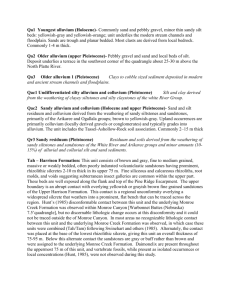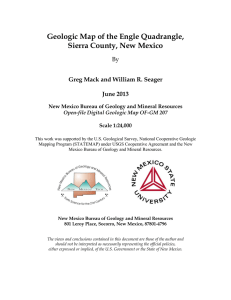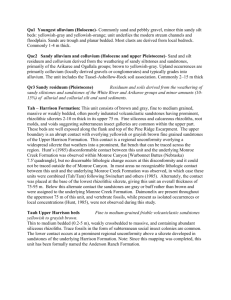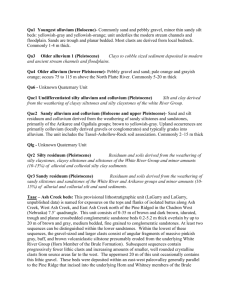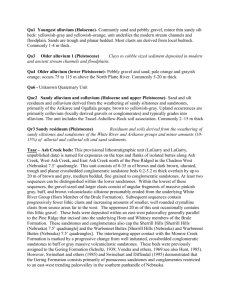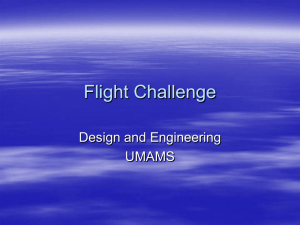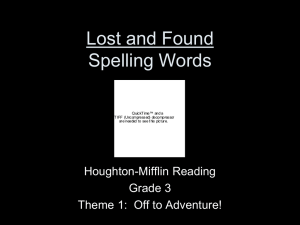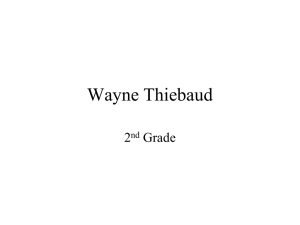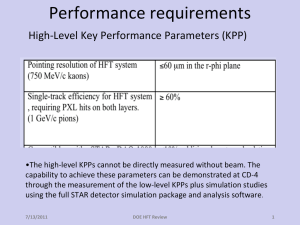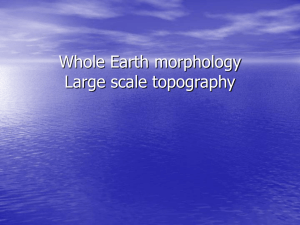Qa1 Youngest alluvium (Holocene)
advertisement
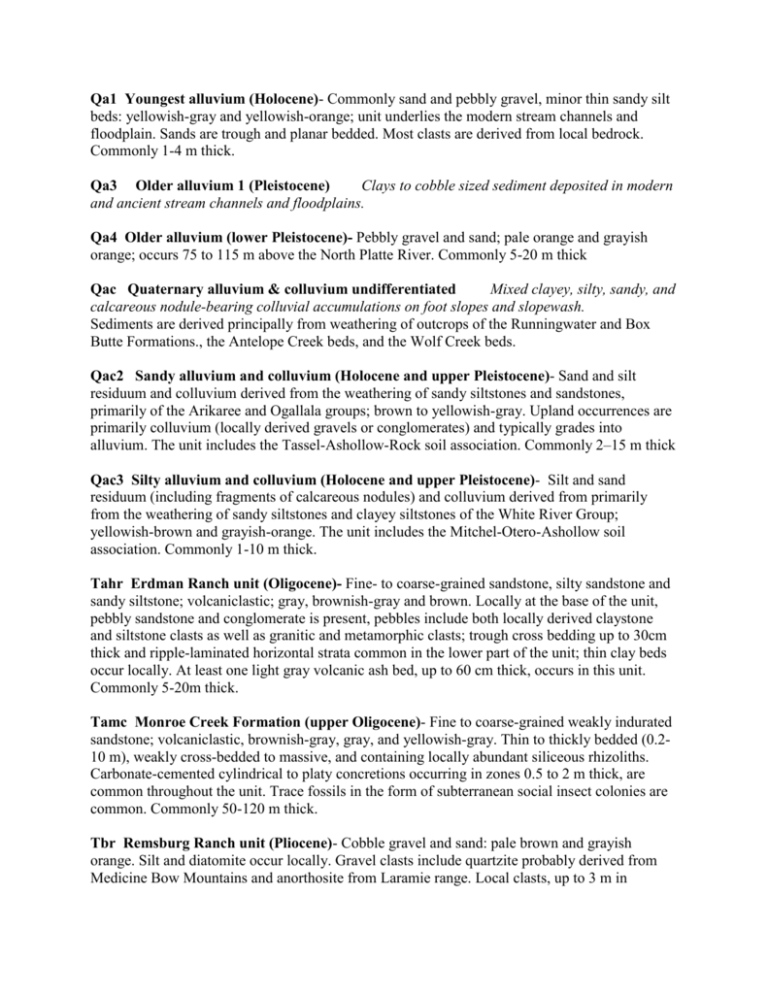
Qa1 Youngest alluvium (Holocene)- Commonly sand and pebbly gravel, minor thin sandy silt beds: yellowish-gray and yellowish-orange; unit underlies the modern stream channels and floodplain. Sands are trough and planar bedded. Most clasts are derived from local bedrock. Commonly 1-4 m thick. Qa3 Older alluvium 1 (Pleistocene) Clays to cobble sized sediment deposited in modern and ancient stream channels and floodplains. Qa4 Older alluvium (lower Pleistocene)- Pebbly gravel and sand; pale orange and grayish orange; occurs 75 to 115 m above the North Platte River. Commonly 5-20 m thick Qac Quaternary alluvium & colluvium undifferentiated Mixed clayey, silty, sandy, and calcareous nodule-bearing colluvial accumulations on foot slopes and slopewash. Sediments are derived principally from weathering of outcrops of the Runningwater and Box Butte Formations., the Antelope Creek beds, and the Wolf Creek beds. Qac2 Sandy alluvium and colluvium (Holocene and upper Pleistocene)- Sand and silt residuum and colluvium derived from the weathering of sandy siltstones and sandstones, primarily of the Arikaree and Ogallala groups; brown to yellowish-gray. Upland occurrences are primarily colluvium (locally derived gravels or conglomerates) and typically grades into alluvium. The unit includes the Tassel-Ashollow-Rock soil association. Commonly 2–15 m thick Qac3 Silty alluvium and colluvium (Holocene and upper Pleistocene)- Silt and sand residuum (including fragments of calcareous nodules) and colluvium derived from primarily from the weathering of sandy siltstones and clayey siltstones of the White River Group; yellowish-brown and grayish-orange. The unit includes the Mitchel-Otero-Ashollow soil association. Commonly 1-10 m thick. Tahr Erdman Ranch unit (Oligocene)- Fine- to coarse-grained sandstone, silty sandstone and sandy siltstone; volcaniclastic; gray, brownish-gray and brown. Locally at the base of the unit, pebbly sandstone and conglomerate is present, pebbles include both locally derived claystone and siltstone clasts as well as granitic and metamorphic clasts; trough cross bedding up to 30cm thick and ripple-laminated horizontal strata common in the lower part of the unit; thin clay beds occur locally. At least one light gray volcanic ash bed, up to 60 cm thick, occurs in this unit. Commonly 5-20m thick. Tamc Monroe Creek Formation (upper Oligocene)- Fine to coarse-grained weakly indurated sandstone; volcaniclastic, brownish-gray, gray, and yellowish-gray. Thin to thickly bedded (0.210 m), weakly cross-bedded to massive, and containing locally abundant siliceous rhizoliths. Carbonate-cemented cylindrical to platy concretions occurring in zones 0.5 to 2 m thick, are common throughout the unit. Trace fossils in the form of subterranean social insect colonies are common. Commonly 50-120 m thick. Tbr Remsburg Ranch unit (Pliocene)- Cobble gravel and sand: pale brown and grayish orange. Silt and diatomite occur locally. Gravel clasts include quartzite probably derived from Medicine Bow Mountains and anorthosite from Laramie range. Local clasts, up to 3 m in diameter, derived from Monroe Creek Formation calcareous concretions typically occur near the base of the unit. Occurs as a 50-100 m wide discontinuous outcrop belt across the northeast portion of the quadrangle. This unit is the erosional remnant of the lower portion of the Broadwater Formation. Commonly 5-20 m thick. Twbs Sharps Member (upper Oligocene)- Sandy siltstone and silty sandstone; volcaniclastic, brown and yellowish-brown. Massive to weakly stratified. Carbonate-cemented nodular concretions, typically 5 to 15 cm in diameter, are locally abundant. A small group of exposures up to 12 m thick, in section 10, T 24N, R55W contain 3 m of trough cross-bedded fine- to medium sandstone overlain by 4 m of ripple-laminated fine sandstone. These beds appear to be the basal strata of an paleovalley deposit (informally named the Schomp Ranch Channel) eroded as much as 50 m into the Whitney Member. At least one very light gray, biotitic volcanic ash bed, up to 70 cm thick, occurs in this unit. Vertebrate fossils are uncommon; fragments of oreodont jaws and limbs were recovered during the mapping. Commonly 50 m thick. Twbw Whitney Member (upper Oligocene)- Siltstone; volcaniclastic; grayish orange and yellowish brown; predominantly interpreted as eolian in orgin. Unit typically very thick bedded to massive. Siltstone cemented with clay and carbonate. Member is known to have two regionally correlative ash beds; only the biotitic lower ash (LW ash), up to 1.5 m thick, was positively identified. Commonly 50-100m thick. Wa4 - Unknown
